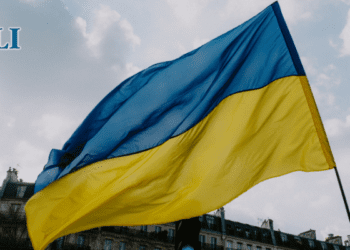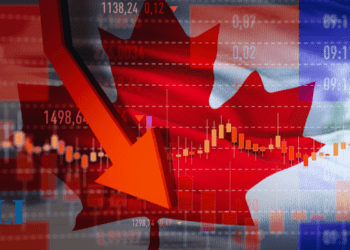 Canada should be open for business, write Brian Lee Crowley and Sean Speer, but Chinese investment isn’t the same as American or Norwegian or Dutch. Ottawa should resist the temptation (as it is rumoured to be doing) to relax state-owned enterprise investment restrictions.
Canada should be open for business, write Brian Lee Crowley and Sean Speer, but Chinese investment isn’t the same as American or Norwegian or Dutch. Ottawa should resist the temptation (as it is rumoured to be doing) to relax state-owned enterprise investment restrictions.
By Brian Lee Crowley and Sean Speer, Aug. 30, 2016
After his finance minister declined to rule out revisiting current restrictions imposed by the Conservatives on investments by state-owned enterprises (SOE) in Canada’s oilsands, there is speculation Prime Minister Justin Trudeau may announce relaxed terms for SOE investment during his state visit to China this week.
Finance Minister Bill Morneau told reporters that the government would “express a continued interest in having a renewed relationship with China … and our view will be that we’ll try and find ways that we can continue to encourage investment in our country.”
Of course the government should aim to attract investment to Canada, including for oilsands development, but it shouldn’t be under any illusion that Chinese investment is the same as American or Norwegian or Dutch. Not all investment is created equal. Ottawa would thus be wise to leave the current restrictions in place.
Canada’s open economy draws investors and customers from around the world. Weexport $524 billion in goods and services per year and attract as much as $768 billion annually in foreign capital. Adam Smith’s economic vision of enlightened self-interest has served Canada’s economy well.
Not all investment is created equal. Ottawa would thus be wise to leave the current restrictions in place.
But Smith’s concept of self-interest wasn’t merely a materialistic one. He understood that different jurisdictions could have competing national interests and that such differences could be the source of tension and even conflict. His prescription: “defence … is of much more importance than opulence.” Modern translation: national security cannot take a backseat to trade.
Which brings us to the prime minister’s trip, Canada’s relationship with China, and the prospect of reopening the oilsands to SOE investment.
China is a major investor and customer for Canada’s economy. Two-way trade in 2015 was up 10 per cent to $85 billion and inward investment reached more than $20 billion. No doubt this will continue to rise as China’s middle class expands and its demand for energy and other Canadian exports grows accordingly.
 The government is therefore right to focus on expanding trade opportunities in China. But we shouldn’t forget who we’re dealing with or lose sight of our national interest in exchange for “opulence,” particularly when it comes to Chinese SOE investment in the oilsands and possibly other strategic sectors.
The government is therefore right to focus on expanding trade opportunities in China. But we shouldn’t forget who we’re dealing with or lose sight of our national interest in exchange for “opulence,” particularly when it comes to Chinese SOE investment in the oilsands and possibly other strategic sectors.
Chinese SOEs are controlled and influenced by the Chinese government and are plainly agents of the Chinese state, the same state that has been caught red-handed engaging in espionage against Canadian state and corporate interests and in other unfriendly acts. Like their owners in Beijing, these companies have broader political objectives including corporate espionage, the acquisition of strategic resources, and geopolitical calculations.
As former senior CSIS official Ray Boisvert has said: “state-owned enterprises have the same marching orders or essentially the same mandate or mission” as the broader Chinese state. It’s notable for instance that SOEs (including the Chinese National Offshore Oil Corp.) have been key players in China’s illegal territorial expansionism in the South China Sea.
Placing limits on Chinese SOE investment in key sectors that involve strategic or critical assets, such as the oilsands, as was done in 2012 was thus prudent and wise. Few in the intelligence community would argue that the security risks are worth the economic benefits of reversing them.
And it’s far from clear that we “need” Chinese investment as some have argued anyway. Regulators are presently evaluating billions in proposed capital investments and there are promising developments in indigenous investment in oilsands projects.
Recent forecasts from the Alberta Energy Regulator anticipate $194 billion in oilsands capital investment between 2016 and 2025. A year-over-year average of roughly $20 billion is not at all that challenging, even without Chinese investment, in a world awash with capital hungry for a decent return. Just consider that oilsands investment is still expected to be $17 billion in 2016 in what is poised to be one of the sector’s worst years in decades.
Like their owners in Beijing, these companies have broader political objectives including corporate espionage, the acquisition of strategic resources, and geopolitical calculations.
The irony is that at exactly the time Ottawa is courting Chinese investment in the oilpatch, it continues to preside over policy uncertainty regarding carbon taxes, aboriginal consultation, and pipeline construction that’s preventing companies right here in Canada from investing billions of dollars immediately. If there’s been difficulty deploying capital in the oilsands, it isn’t because the Chinese aren’t welcome, but because governments in Canada have driven off investment by Canadians and reputable international investors. If Ottawa fixes these roadblocks, and there’s money to be made in oil, there will be lots of capital available with no national security risks attached.
Such an agenda would serve Canada’s national security and economic interests and follow Smith’s prescription for balancing defence and opulence. It’s this clear-eyed formulation of Canada’s national interests that should guide Prime Minister Trudeau’s visit to China.
Brian Lee Crowley is the managing director and Sean Speer is a senior fellow at the Macdonald-Laurier Institute




